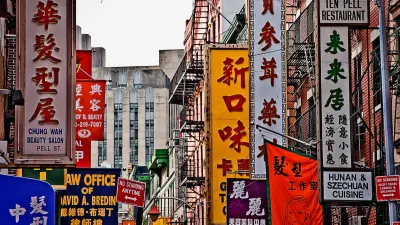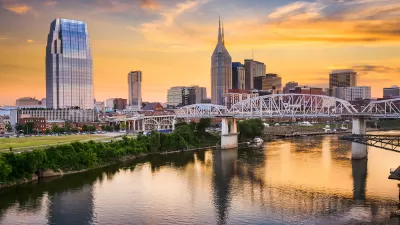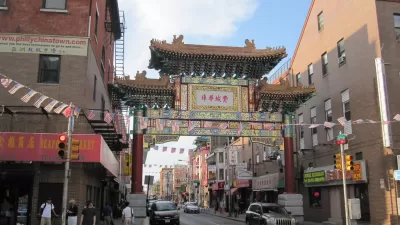New York's Chinatown has been impenetrable to non-Chinese entrepreneurs for a century, but new glitzy bars and restaurants are beginning to push through. In a neighborhood that has suffered since 9/11, locals debate the merits of outsider investment.
White Star Bar, which specializes in absinthe, is located in the heart of New York's Chinatown. Owner Sasha Petraske responds to the cries of gentrification:
"'People conflate two totally separate issues. What they don't like are people who are inconsiderate and entitled. That's not the same thing as money. What ruins a neighborhood is running businesses irresponsibly,' says Petraske, indirectly referencing the drunken partyers who litter certain New York City sidewalks. As for the unglamorous corner that is home to his latest venture: 'This part of Manhattan is the only part left that can hold its own against Downtown Brooklyn,' he says with a laugh.
Beatrice Chen, the director of education at the Museum of Chinese in America, takes a pragmatic view of the changes. She doesn't fall on one side or the other of the gentrification issue, clarifying that though she doesn't want Chinatown to become the next Lower East Side, she doesn't want it to be stagnant, either. "Chinatown is still revitalizing after 9/11," she says. 'Forty restaurants closed after that month of blocking off Canal Street. That's a huge consideration' She also notes that outside entrepreneurs are hardly the only ones opening businesses there. Yello, a popular and relatively new Chinese-American-owned bar on Mulberry Street, is 'a sign of change in Chinatown' -the younger generation making its trendy mark-as is its neighbor, Mama Café, which is also owned by Chinese-Americans.
FULL STORY: Point of gentry

Alabama: Trump Terminates Settlements for Black Communities Harmed By Raw Sewage
Trump deemed the landmark civil rights agreement “illegal DEI and environmental justice policy.”

Planetizen Federal Action Tracker
A weekly monitor of how Trump’s orders and actions are impacting planners and planning in America.

The 120 Year Old Tiny Home Villages That Sheltered San Francisco’s Earthquake Refugees
More than a century ago, San Francisco mobilized to house thousands of residents displaced by the 1906 earthquake. Could their strategy offer a model for the present?

In Both Crashes and Crime, Public Transportation is Far Safer than Driving
Contrary to popular assumptions, public transportation has far lower crash and crime rates than automobile travel. For safer communities, improve and encourage transit travel.

Report: Zoning Reforms Should Complement Nashville’s Ambitious Transit Plan
Without reform, restrictive zoning codes will limit the impact of the city’s planned transit expansion and could exclude some of the residents who depend on transit the most.

Judge Orders Release of Frozen IRA, IIJA Funding
The decision is a victory for environmental groups who charged that freezing funds for critical infrastructure and disaster response programs caused “real and irreparable harm” to communities.
Urban Design for Planners 1: Software Tools
This six-course series explores essential urban design concepts using open source software and equips planners with the tools they need to participate fully in the urban design process.
Planning for Universal Design
Learn the tools for implementing Universal Design in planning regulations.
Clanton & Associates, Inc.
Jessamine County Fiscal Court
Institute for Housing and Urban Development Studies (IHS)
City of Grandview
Harvard GSD Executive Education
Toledo-Lucas County Plan Commissions
Salt Lake City
NYU Wagner Graduate School of Public Service





























